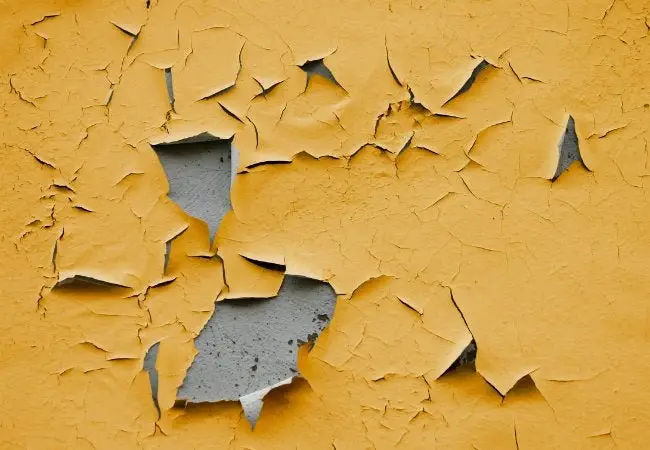When it comes to painting, there are many different types of paint to choose from, each with its own advantages and disadvantages.
One of the most popular types of paint is gloss paint, which is known for its shiny and reflective finish. While gloss paint can provide a beautiful and durable finish, it also has its drawbacks.
In this article, we will explore 9 disadvantages of gloss paint in detail, so that you can make an informed decision about whether it is the right choice for your next painting project.
1. Highlights surface imperfections

The reflective nature of gloss paint can make imperfections on the surface more noticeable.
Even minor bumps, scratches, or rough patches can stand out more prominently when coated with gloss paint compared to other types of paint.
2. Difficult to touch up
Touching up gloss paint can be challenging because the reflective surface makes even small patches of touch-up paint stand out.
Making it difficult to achieve a seamless finish when doing touch-up work with gloss paint.
3. Expensive
Gloss paint usually costs more than other types of paint, like flat or satin paint. This is because gloss paint needs extra pigment and other materials to create its shiny and durable finish.
Also, more coats of gloss paint might be required to get complete coverage, which can add to the total cost of the project.
Even though the initial cost of gloss paint may be higher, it may last longer than other types of paint, making it a cost-effective choice over time.
4. Harder to apply

The thicker consistency of gloss paint can make it more challenging to apply evenly, especially for novice painters. Resulting in a streaky or uneven finish, which can be unsightly and difficult to fix once the paint has dried.
In addition, gloss paint tends to dry faster than other types of paint, which means that you will need to work quickly to achieve a smooth and even finish.
To apply gloss paint effectively, it is important to use the right tools, such as a high-quality brush or roller, and to take your time to ensure that the paint is applied evenly and smoothly.
With practice and patience, it is possible to achieve a beautiful and durable finish with gloss paint.
5. Show brush or roller marks
The reflective surface of gloss paint can make brush or roller marks more noticeable than with other types of paint.
This can be particularly problematic when painting large surfaces, as it can be difficult to achieve a consistent finish without leaving visible marks or streaks.
To avoid this issue, it is important to use high-quality tools and techniques when applying gloss paint.
For example, you may want to use a fine-grit sandpaper to smooth the surface before painting, and a high-quality brush or roller to apply the paint evenly and smoothly.
It is also important to work in a well-ventilated area and to take breaks as needed to avoid fatigue, which can lead to uneven application of the paint.
With care and attention, it is possible to achieve a beautiful and even finish with gloss paint.
6. Takes longer to dry
Gloss paint is thicker than other paints, so it takes longer to dry. This can be a pain if you’re short on time.
Plus, because it takes longer to dry, dust or debris can settle on the surface and cause bumps or unevenness.
To avoid this, make sure you’re painting in a well-ventilated area and give each coat of paint plenty of time to dry completely before adding more or touching it up.
You can also use a fan to help speed up the drying process, but make sure you read the instructions carefully to avoid any damage to the paint.
7. Yellow over time
Gloss paint can yellow over time due to exposure to sunlight or heat, leading to a loss of vibrancy and shine on the surface.
This is a big problem for surfaces that receive direct sunlight like doors, windowsills, and exterior walls.
High humidity and temperature fluctuations can make the yellowing happen even faster. To prevent this, choose a high-quality gloss paint that’s specifically formulated to resist yellowing over time.
8. Difficult to clean
The shiny surface of gloss paint can be a challenge to clean compared to other types of paint.
The reflective nature of the paint makes dirt, dust, and smudges more visible, and the surface can be easily scratched or damaged during cleaning.
9. Not suitable for all climates

The use of gloss paint may not be ideal for all climates, especially in regions with high humidity or rapid temperature fluctuations.
This is because the glossy finish may be more prone to cracking or peeling in extreme weather conditions, which can negatively impact the appearance and durability of the painted surface.
Therefore, it is important to consider the climate of your area when choosing the type of paint to use.





